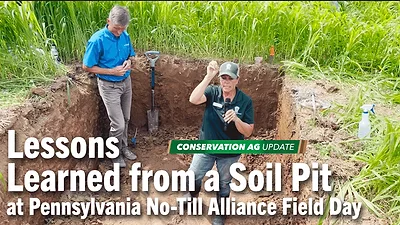There are no major insect pests of soybean seedlings, but occasionally we do run into problems. Some folks use an insecticidal seed treatment in soybeans. While these products are effective to kill insects, they will not provide a yield benefit. To my knowledge, there has never been a single university field trial that showed a yield benefit to using an insecticidal seed treatment in any Southeastern state.
Tobacco thrips lives on both corn and cotton. Some of these thrips are resistant to some insecticidal seed treatments in the Midsouth. We can expect to drive resistance in our system if we use seed treatments where they aren’t needed. Let’s save the seed treatments for corn and cotton. Finally, insecticidal seed treatments don’t do anything for non-insects like slugs, deer, etc.
Here are some descriptions of injury you might encounter:
1. Thrips can pucker soybean leaves and silver them when densities are high. They will not cause a yield loss and no treatment is needed.
2. Bean leaf beetle is a pest that should be managed later in the season. It will almost never reach economic threshold in the early season for soybean.
3. Grasshoppers, katydids, and cutworms tend to be a problem on fields with lots of residue (think no-till) and fields that have not been properly rotated. They are also more of a problem on field edges. These should be controlled with a pyrethroid if they begin to reduce stand levels to densities below those recommended by NC Cooperative Extension (see adjacent graph).
4. Slugs, which are also more of a problem in no-till fields, are more difficult to control, as insecticides are ineffective. They are more of a problem when conditions are cool and wet. Slugs are difficult to sample, not only because of their small size, but because they are active in low light conditions, like cloudy days and at night. One thing that you can do is to move the residue around to find the slugs and to look for the slime of their trails where they have moved. The dried slime will shine in the sun.
Slugs will feed on the margins of plant leaves and once they have consumed this tissue, they can move to rasp and feed on terminals. Sometimes you will see chunks missing from the seedling stem where they have fed. In severe cases, slugs can consume entire seedlings.
The best management action to reduce slugs is to till. If you’re producing under no-till, slugs are probably not going to change your tillage practices. Basically the more trash you can clean away from the seedlings, the fewer problems you will have. Consider strip till. Less drastic steps are focusing on good residue removal with the row sweepers and using starter fertilizer. The only known remedial measure for slugs, besides waiting for warmer and dryer weather, is to use Deadline M-Ps (AMVAC).
5. Three-cornered alfalfa hoppers feed on seedling and are generally discovered after the fact, when plants lodge later in the season. Seed treatments and foliar pyrethroid sprays can effectively manage these insects. The problem is that it takes EXTREMELY high densities to impact yield. So your money is wasted 99.9% of the time targeting a seed treatment for these critters. In short, if you’ve had a problem with these in the past, do not waste your money with a seed treatment. Scout your beans and treat if you need to.
6. Finally, lesser cornstalk borer can give us problems, especially in late-planted soybeans, on droughty soils, and/or during hot and dry periods. Unfortunately we do not know of any remedial control measure (including pesticides) that is effective for this insect.





